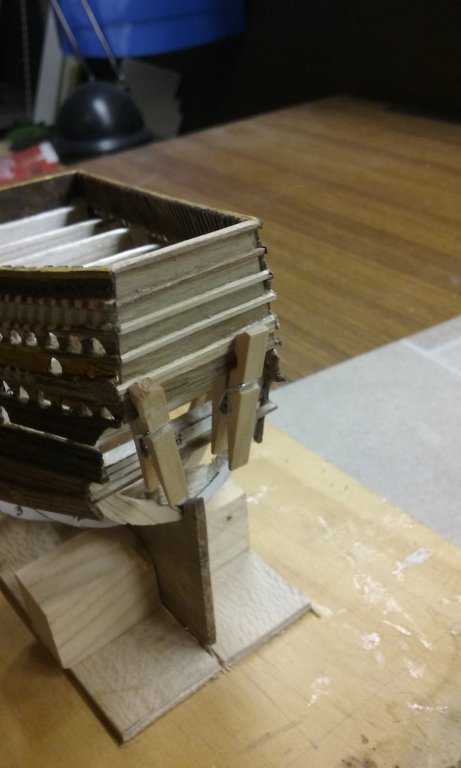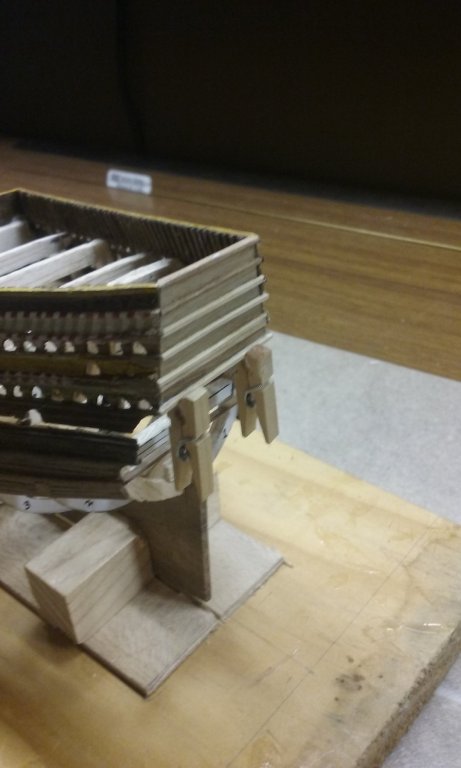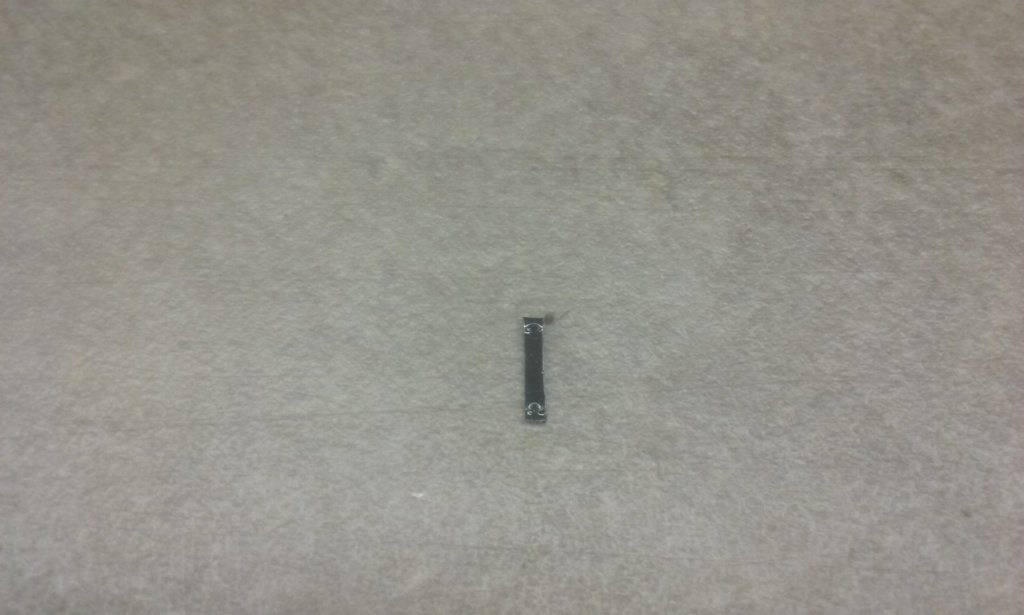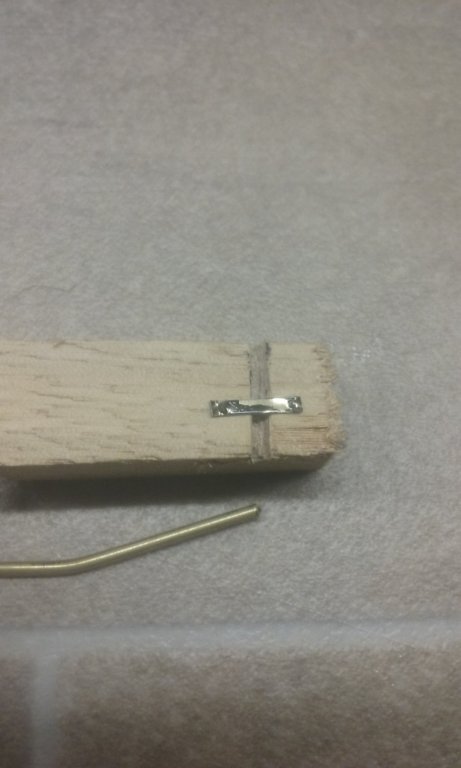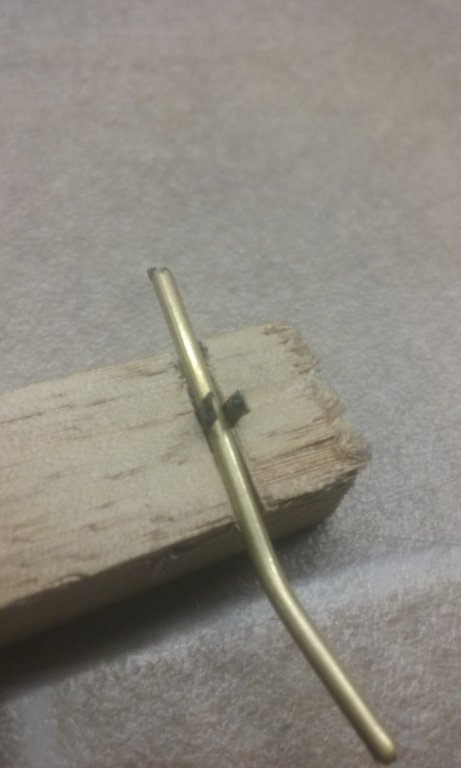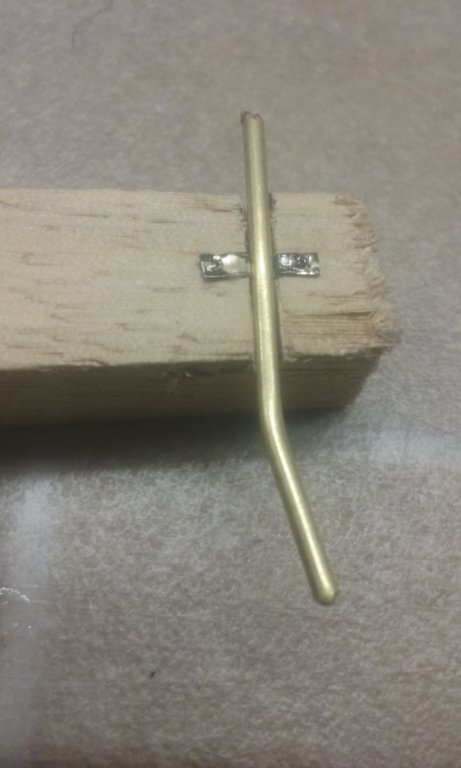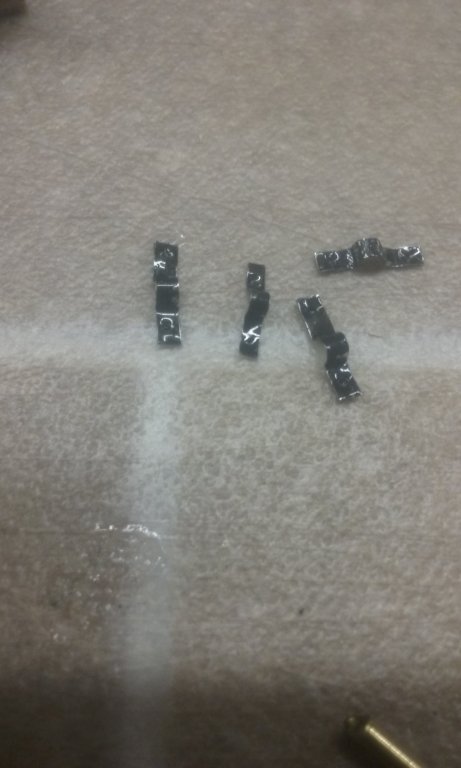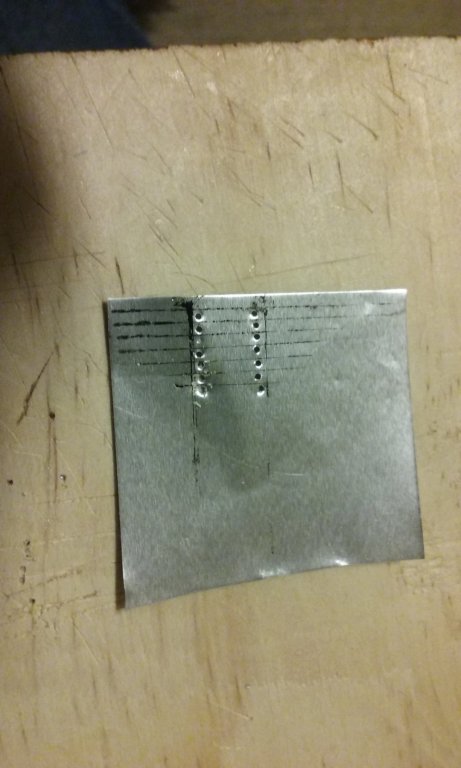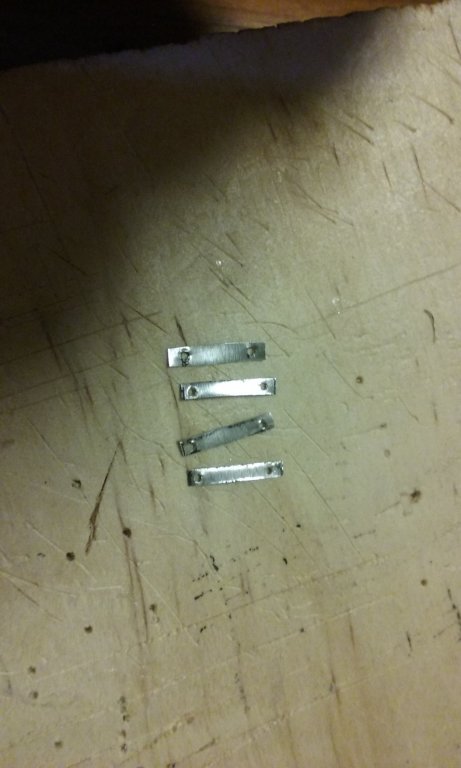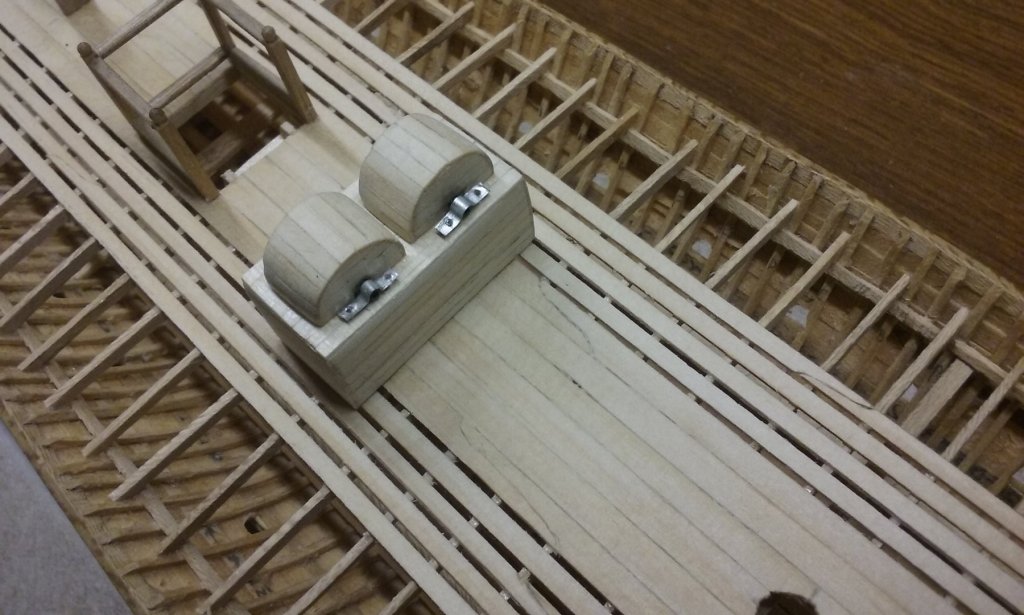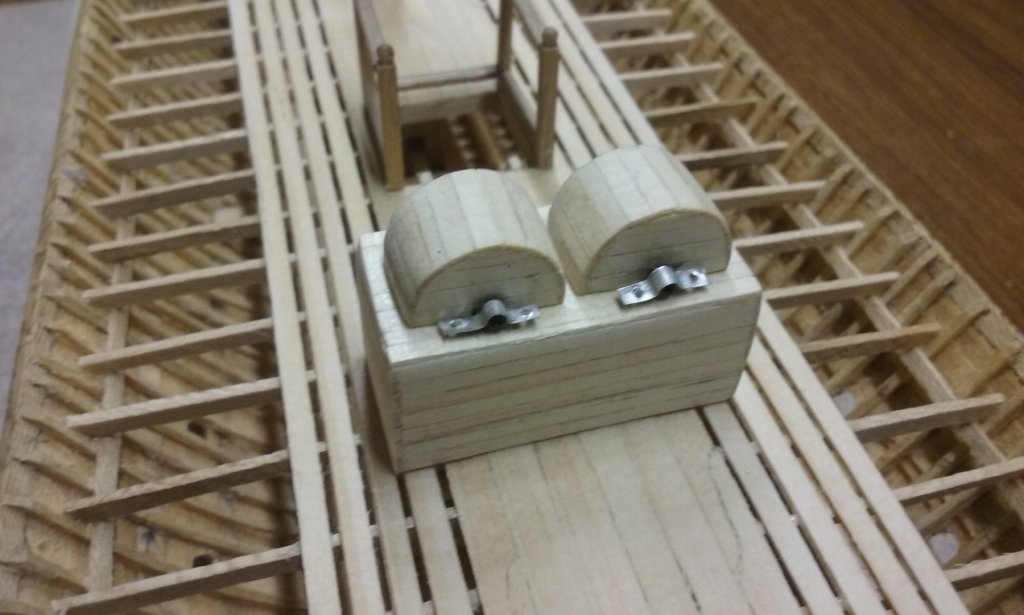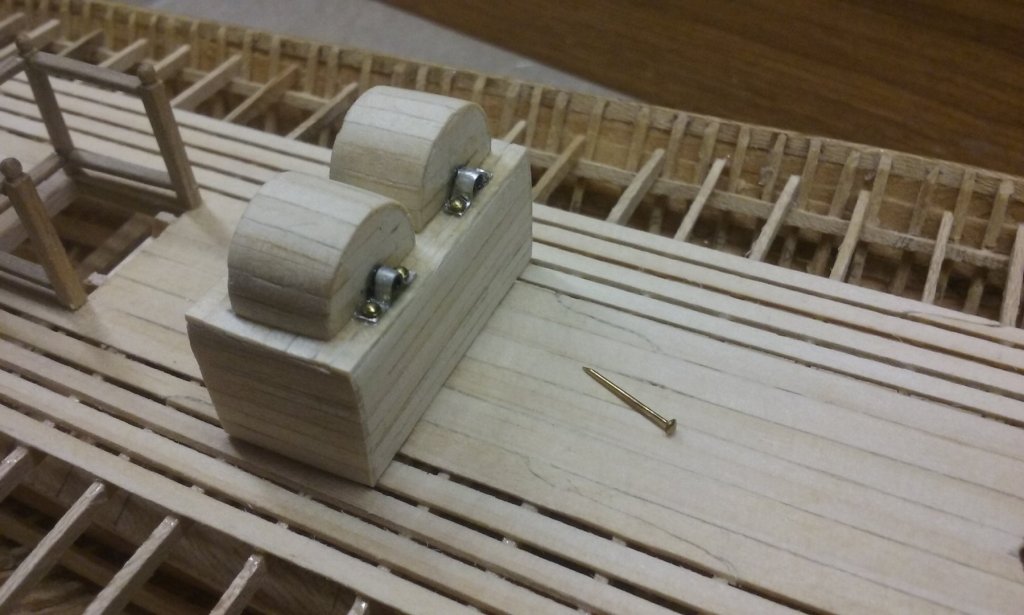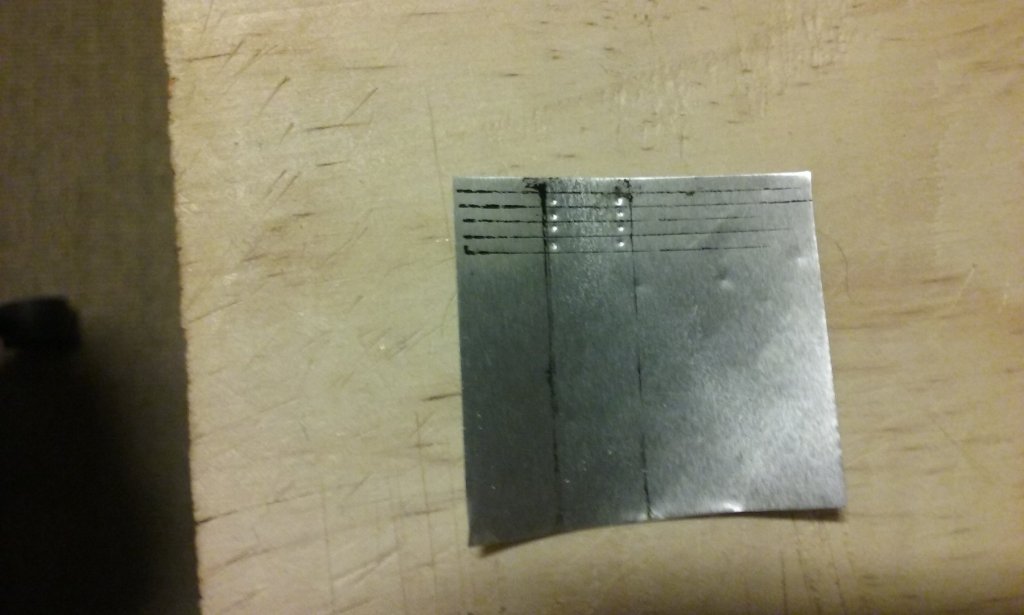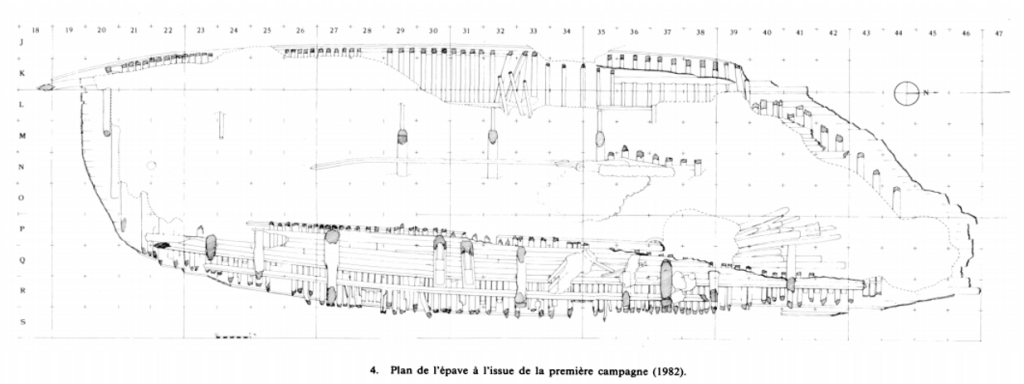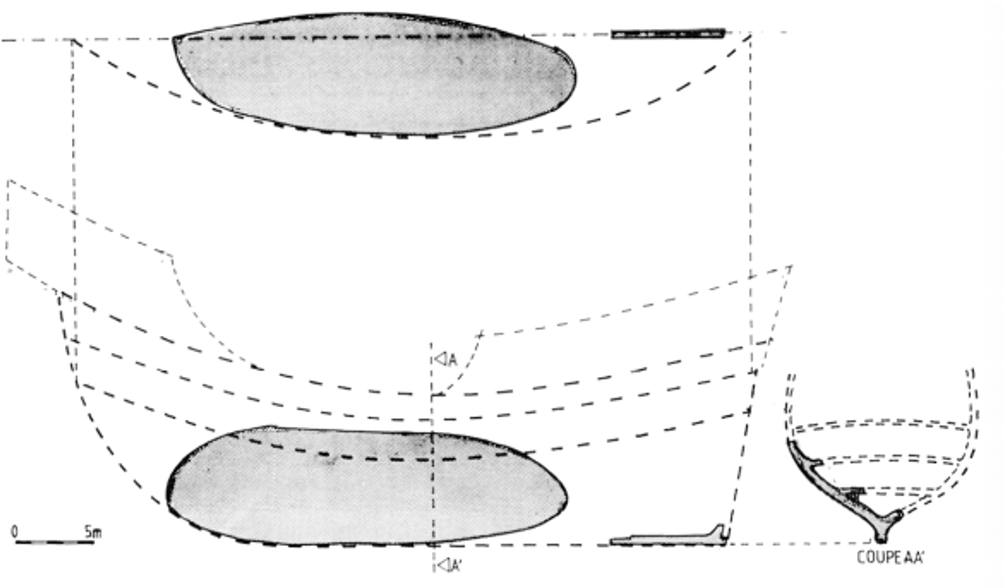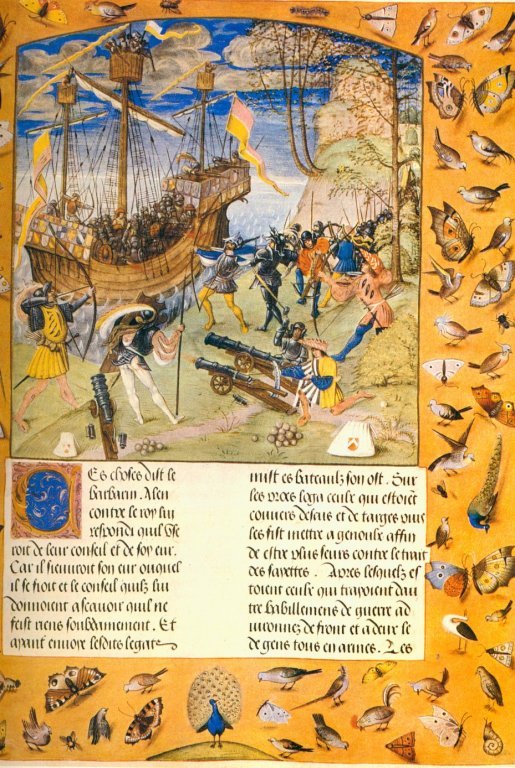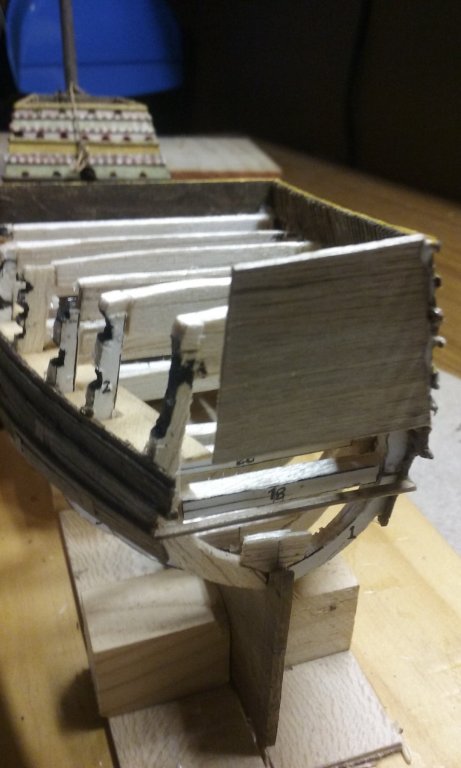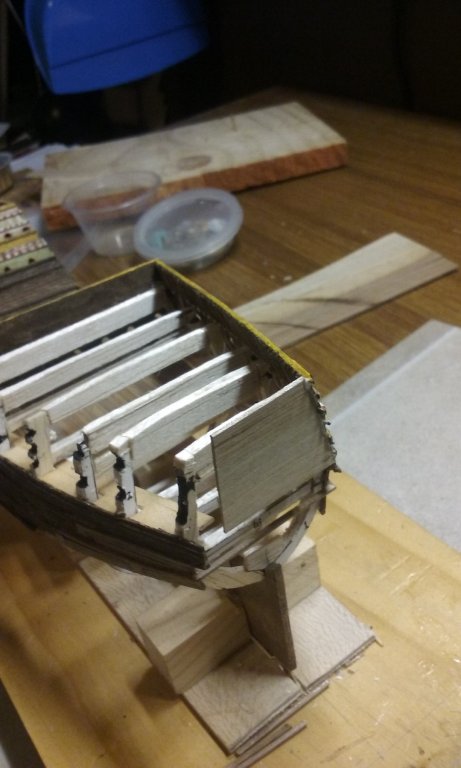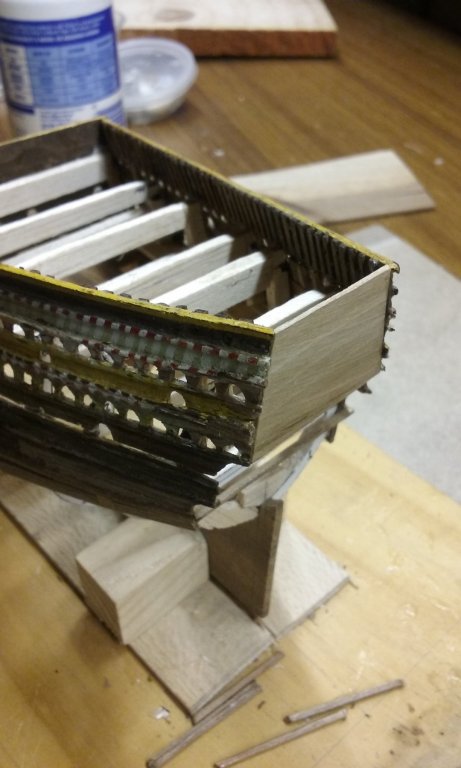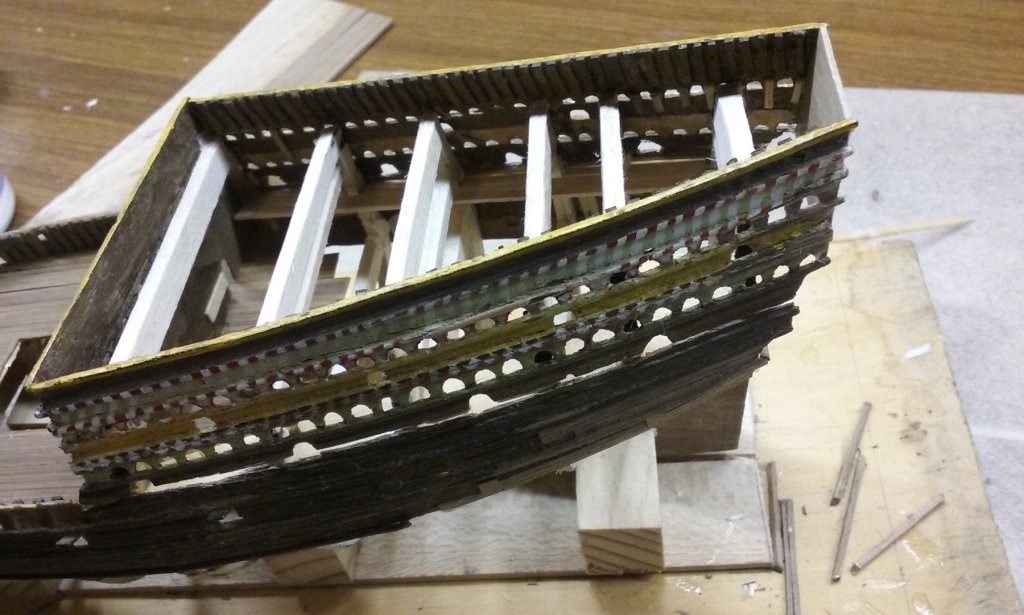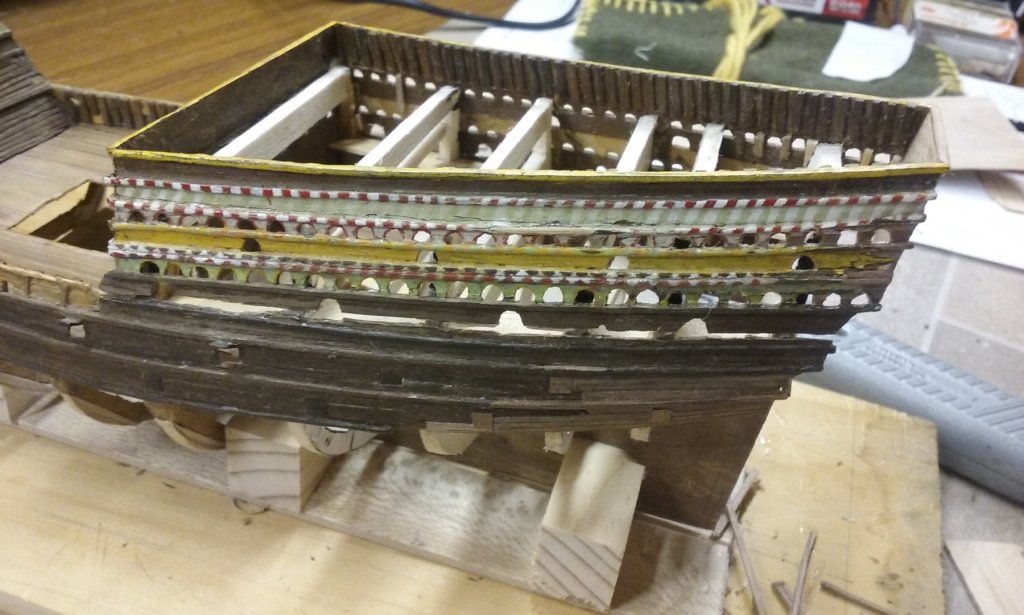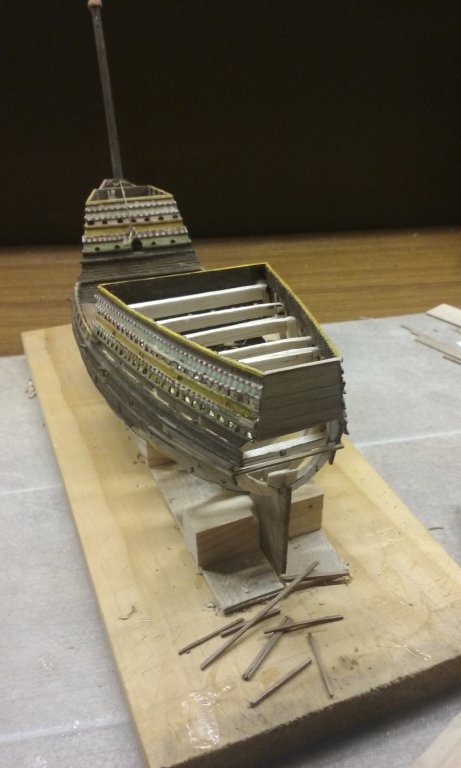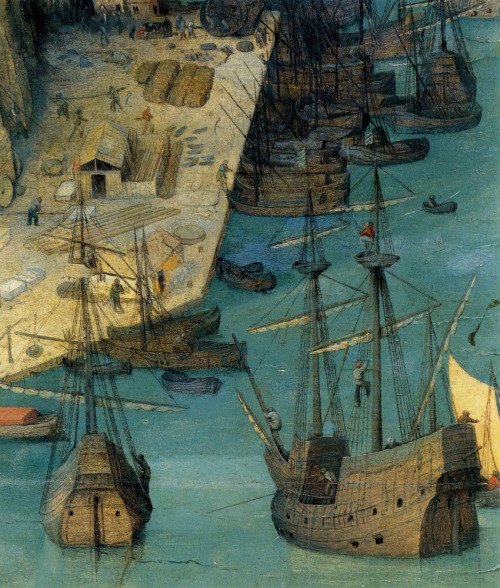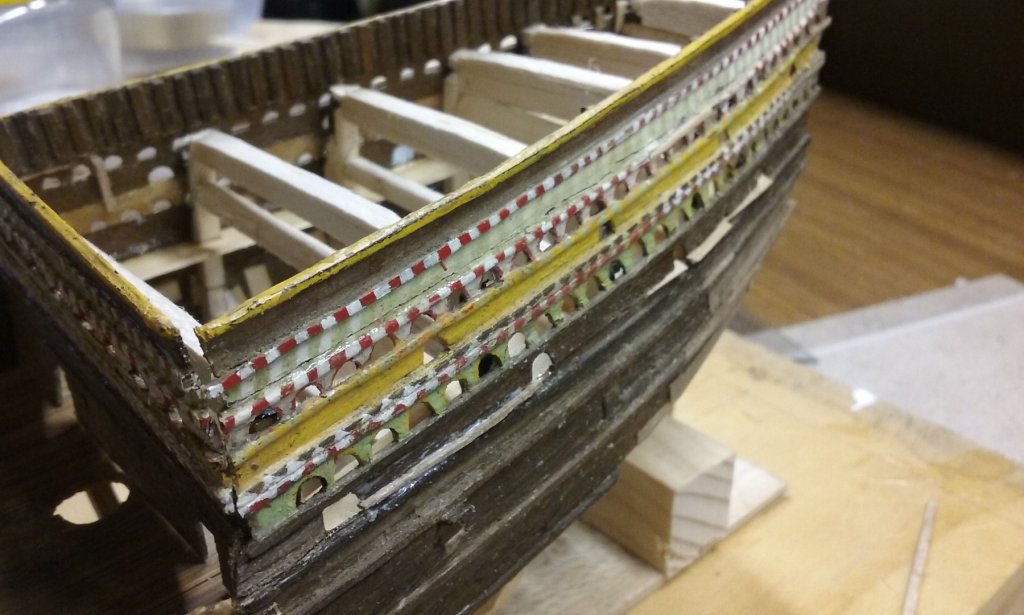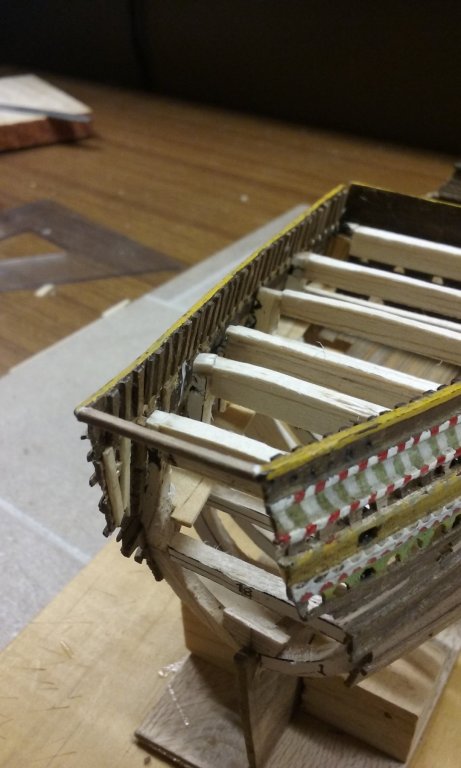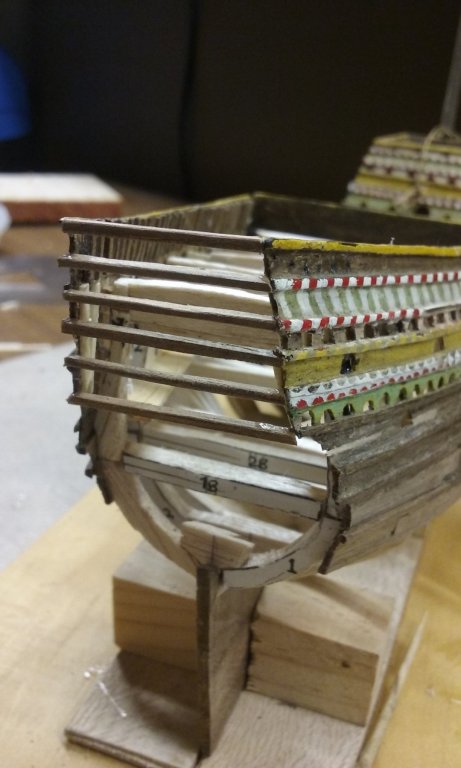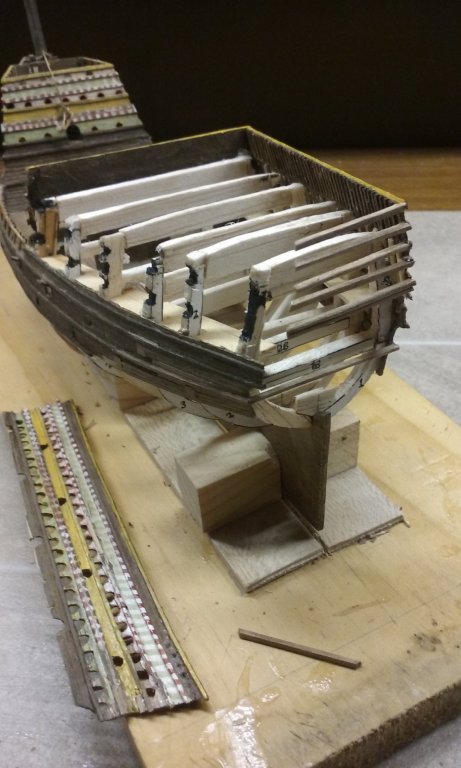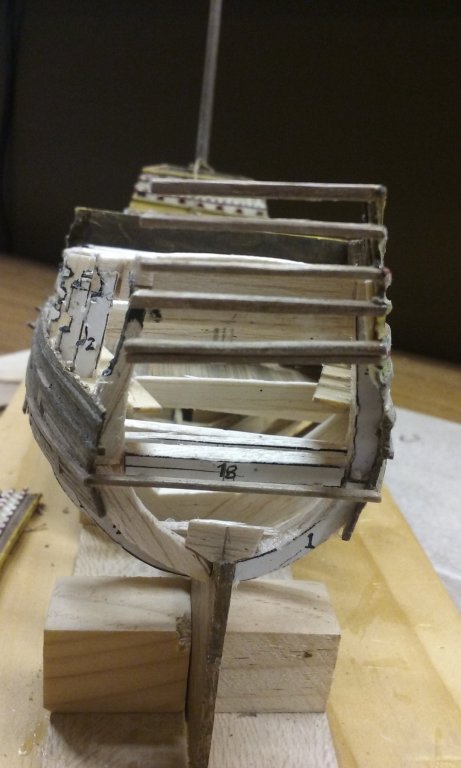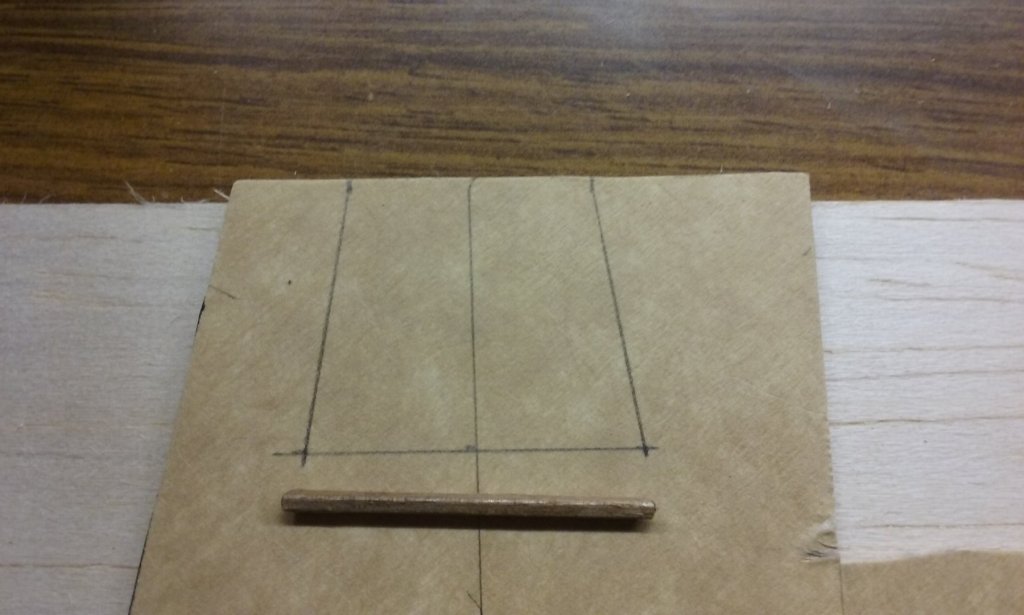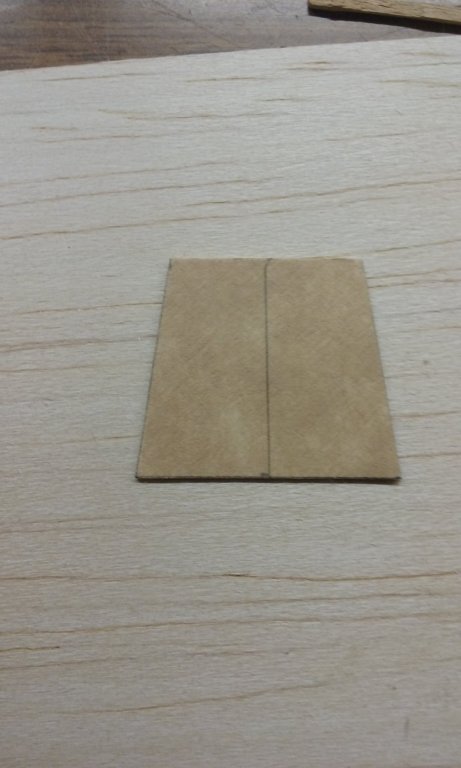-
Posts
7,986 -
Joined
-
Last visited
Content Type
Profiles
Forums
Gallery
Events
Everything posted by Louie da fly
-
After quite a long gap, I've put the wales on the transom. Unfortunately the wales on the port and starboard sides of the ship don't line up perfectly with each other, so I had to fudge it a bit to get the transom wales as close to parallel and horizontal as I could. Next job is to cut arched gunports in the transom, then make the lower part of the stern. I also have to fit a sliver of wood between the main hull and the upper works to fill the gap noted in the previous post. Slow but steady progress. Steven
- 740 replies
-
- Tudor
- restoration
-
(and 4 more)
Tagged with:
-
Thanks everyone for the likes and comments. Much appreciated. Just a bit of finalizing on the chain pump - the brackets holding down the (spindles?) for the cranks. Cut from the little foil boxes the cat meat comes in. Here's the first attempt: I had to do them twice because I got the sequence wrong (but I am rather pleased with the little jig I made to shape them). Drill the holes, then cut the foil into strips, not the other way around (foil strips twisted into unrecognisable shapes by the drill bit). Turned out there was a lot of wastage trying to get the holes in exactly the right places (using a standard carpentry drill - too big and heavy - I have a dremel knock-off but haven't been able to work out how to work the flexible drive to do fine work. I really need to sit down for a while and figure it out.) That's about all the good ones I was able to get (except for the one that fell on the floor and was transported into a parallel universe). Here are the brackets in place - glued at the top of the curve with a spot of CA, then when it was dry, using a stylus thingy to push the foil into the the final shape. And drilled through the holes into the top of the pump case and fixed with fine brass pins, glued in with CA. Once the glue is dry I'll paint all this "iron" black. I realised I should have put the openings in for the dales before I attached the pump assembly to the deck, so I'm going to have to do that in situ, which will be a bit more difficult. Steven
-
Good question. The only statement that might be appropriate (excuse my translation, which might not catch the full intent of the original) is "In the 17th and 18th centuries, the piece intended to avoid wear described here as a “comb” was called an eye (calcet with two eyes), the amans (ropes?) passing through holes and not as here in a groove. The groove at the top of the calcet was probably intended to take the strops of the auxiliary tackles (carnal and carnalette). " What this means exactly, I really don't know, but the reference to the carnal and carnalette might be the answer to your question. Perhaps Rene Burlet may be able to provide the answer, if you can find the right book. He has written a paper called "But how did they row the galleys of the Sun King (Louis XIV)" and a book called "Les galères au Musée de la Marine" (https://books.google.com.au/books/about/Les_galères_au_Musée_de_la_Marine.html?id=4ODlHStz_uMC&redir_esc=y ) analysing the models of galleys in that Museum. The site contains a link to a chapter entitled La galère à la voile (The galley under sail) which on a quick perusal seems to offer some clues. It is all in French, but I've translated below the bits that appear relevant: “The control of the yards, of which the weight is considerable, (a mestre [master?] yard, its largest sail and its manoeuvres easily amounting to 2.5 tonnes) is a delicate affair which requires a series of precautions . . . the yard is supported by a strong tackle which we have already mentioned with its top-rope falls. It is held to the mast by doubled cordage, the trusses equipped with parrels to slide the length of the mast when needed. These trusses are blocked by the angui tackle (??? - I've no idea what this means).” “ . . . to close this brief enumeration, there are two tackles used for each mast, the canal and the carnalette. It should be noted that these could equally be used to hoist barrels of wine.” I'm afraid that still doesn't answer your question, however. He goes on to say that because the size of a lateen sail can’t be adjusted (i.e. reefed) – it’s all or nothing - each galley carried three sets of sails of different sizes for different conditions. Steven
- 263 replies
-
- nave tonda
- round ship
-
(and 2 more)
Tagged with:
-
Translated from French, the report of the 1987 dive states "Discovered at Q35, [see plan below] close to double pulley A 167 and under the two wheels A66, this rigging piece is in the form of a case with a double pulley with two slots, associated with a sifflet (angled scarph) joint of semicircular section . . ." "INTERPRETATION – HISTORICAL AND ARCHAEOLOGICAL REFERENCES (MG – ER) This rigging piece has been identified by Rene BURLET, specialist in galleys and lateen rig. It is a calcet which is fixed to the top of a mast of lateen rig. The two sheaves, often of bronze, serve for the passage of the double halyards of the antenne (lateen yard) (ref D No. 95/87) (page 43) . . . " "The calcet has dimensions corresponding to a mast height of 12 to 15 metres, which could be a mizzen or Bonaventure mizzen." So there you are. Yes it's from a lateen mast, and was found somewhat sternward of midships. Though no pictures exist of the Lomellina herself, the late 15th century representation below flies the banner of the Lomellini family, and is probably of the previous Lomellina (the Lomellina I?) sunk in 1503. Steven
- 263 replies
-
- nave tonda
- round ship
-
(and 2 more)
Tagged with:
-
She was presumably square rigged (no contemporary pictures exist, and what remains of the masts and spars are not in situ), but I'm assuming the calcet was from the mizzen, which would have been lateen rigged. However, I'll have a look and see if the archaeological report mentions anything, particularly about where the calcet was found in relation to the rest of the ship. Steven
- 263 replies
-
- nave tonda
- round ship
-
(and 2 more)
Tagged with:
-
Not sure if I've shared this with you, and I know it's somewhat previous talking about masting and rigging when you haven't even finished the hull, but regarding the way the calcet is fixed to the mast, The Lomellina (sunk 1516) had one like this; and another similar one was included in the archaeological report, thus: I also realise this is several centuries different, but when it comes time to rig your own, this might be of help. I know in my own build I puzzled greatly over how the calcet could have been fixed to the mast without introducing nasty forces that would cause problems. This solution may have been in use for centuries, and is certainly the best I've seen as an answer to the problem. Hope it helps, Steven
- 263 replies
-
- nave tonda
- round ship
-
(and 2 more)
Tagged with:
-
You might try carving "pins" into the ends of the upright supports, with corresponding holes in the gunwale. I tried this and it seems to work - https://modelshipworld.com/topic/10344-10th-11th-century-byzantine-dromon-by-louie-da-fly-150/page/30/ Or (if your hand is steady enough) drill holes in the ends of the uprights and insert metal pins, which go into corresponding holes in the gunwale. If you cut sewing pins short they'd probably do the trick as they are hard and tough and won't bend (or break, as one of my wooden ones did). Steven
- 190 replies
-
- ragusian
- marisstella
-
(and 1 more)
Tagged with:
-
Very nice (and very informative). Thanks, Dick. Steven
- 263 replies
-
- nave tonda
- round ship
-
(and 2 more)
Tagged with:
-
looks very good, Dick. Any chance of a photo from a bit further away, showing where it is on the ship? I can sort of get an idea, but a picture would help. Steven
- 263 replies
-
- nave tonda
- round ship
-
(and 2 more)
Tagged with:
-

Unique 500 year old shipwreck in the Baltic sea
Louie da fly replied to mic-art's topic in Nautical/Naval History
Very interesting indeed. This puts it in the era of carracks - one of my favourite types of ship. You can see the wales, and the foremast right aft of the bowsprit - maybe a suggestion of a forecastle? And the ship's boat is two-ended, as shown in most contemporary pictures of them. The mainyard's still there, but most of the aftercastle is gone, though you can see she has a round stern and the timbers supporting the aftercastle are still in place. Anchor still in position, and is that a pump just aft of the mainmast, forrard of the hatch and capstan? SO much detail, and the state of preservation is up there with the Black Sea wrecks. I look forward to hearing more about this one. Steven -
I particularly like points 3 and 4☺️. Steven
- 263 replies
-
- nave tonda
- round ship
-
(and 2 more)
Tagged with:
-
Looks very good, Dick. I've become much more appreciative of windlasses now I've made one of my own. Yours is even simpler than mine, which is probably right because I just copied the one from the Mary Rose, which is from over 400 years later. Is there a particular reason for making it faceted? Steven
- 263 replies
-
- nave tonda
- round ship
-
(and 2 more)
Tagged with:
-
By the way, if you're looking for resources, I've found Hearns Hobbies, under the arches at Flinders St Station, to be very helpful. Just got back from a visit to Melbourne with a tin of Humbrol paint and a piece of very small diameter brass tubing. (To be honest that's not why I went to Melbourne, but we were walking along the river nearby, so . . .) On the other hand, I take it your "local" in Ringwood is "Float a Boat" about which I've heard very good things. Steven
-
Very nice work, David. I don't know how I missed this one - I love carracks and would normally have followed the build. But you've done an excellent job and she looks just like the Mataro ship (well, maybe a little newer 😉) Steven
-
Very nice indeed. You can be justly proud of them. Steven
- 73 replies
-
- mediterranean
- galley
-
(and 1 more)
Tagged with:
-
Definitely McGyver! A clever solution to the problem, and looks pretty good, too, though I think I'd make the hole in the hull smaller - it doesn't need to be that big for the rudder/tiller combination to work. Yes, it's probably possible to turn tooth[picks in a clamped drill. There was a thread on this forum some time ago about someone making a poor man's lathe that way, and it seemed to work well. However, toothpicks are a bit rough and ready when you get them from the shop, so don't be suprised if you have a fair proportion of failures. Just keep at it - it should turn out ok with some practice and a bit of wastage. Steven
-
Well, that's fixed, anyway. I've now put the port superstructure back in place and it now all lines up - at least as well as possible - any further discrepancies come from my 17-year old self not making it perfect in the first place. I was hoping to make the after face of the superstructure the same way it would have been back in the day, with the wales and the strakes made and installed individually, using the cardboard template to define the shape. Unfortunately it just didn't work out that way. I ended up having to make it out of a single sheet of wood (got it right on the second attempt), with the wales glued on the outside instead of forming part of the structure. There is now quite a gap between the lower hull and the port superstructure, which I will have to infill with a new strake. Still, it's now starting to look like the kind of stern you see in Bruegel's paintings, which has got to be a good thing . . . Steven
- 740 replies
-
- Tudor
- restoration
-
(and 4 more)
Tagged with:
-
Hi Kikatinalong, I've had a look at the Mamoli kit and it's a rather nice looking ship. While I agree you're taking on a pretty ambitious project, there's no reason you can't make something to be proud of, even though you may find a few things you aren't totally satisfied with on this, your first build. One thing that might help you, as well as the advice above, particularly from pontiachedmark and knightyo, is to look at the planking tutorials on this forum in the section " Building, Framing, Planking and plating a ships hull and deck" - Planking is a particularly fiddly activity and it's good to have an understanding of the technique before you start. Some kits advocate an oversimplified method of planking which doesn't correspond to the reality, but looking at pictures of your kit, that doesn't seem to be the case. And as you're building a carrack, I'd highly recommend Woodrat's excellent build as a reference. What's not included in that is hardly worth knowing. And as several others have suggested, ask LOTS of questions. The people on this forum are invariably helpful and someone will probably have already found an answer to the problem you're faced with. Best wishes with your build, and start a build log to share your triumphs and problems with the rest of us. PS: Where do you live? As you can see, I'm in Ballarat. You might find other members who aren't all that far from you. Steven
-
Well, why not, Rick? Sounds like something worthwhile to do. And who knows you might get back on it and get a lot of enjoyment from it. Steven
- 740 replies
-
- Tudor
- restoration
-
(and 4 more)
Tagged with:
-
However, whether the Mayflower was painted is another question. She was a fairly small merchant vessel, not a top of the line navy ship. She might have been painted, but as we know almost nothing about her except her approximate size, that she was hired by a bunch of people who weren't all that well off and that she was fairly old in 1620, your guess is as good as mine. There was a reconstruction built of Mayflower in 1957, which was sailed across the Atlantic and is still in Plimouth Plantation. She has a bit of decorative paintwork - do a google image search for Mayflower replica and you'll see her. Apparently a new reconstruction is being built at the moment, but I couldn't find any pictures of her.
-
Well, I started adding more slivers between the port superstructure and the lower hull, and cutting them back flush with the planking. Then an AAAAARGGGHHH moment, I'm afraid. I've discovered that I'd got the position and alignment of the port superstructure wrong. You can see it on the following photos. When I started putting in cross-pieces at the stern I realised the starboard side was higher than the port, so the crosspieces weren't square. You can see the difference in angle between the top crosspieces and the one at the bottom, which is the only one that's correct. I could have left it as it was - "she'll be right" - but I know it would have sneered at me from then on, and I'd have cursed myself for not fixing it when I could have. So I've removed it again (thank heaven for isopropanol) so I can fix it properly. I've made a cardboard template which will be used to get the shape of the after end of the aftercastle right. I'll be able to re-use all the bits, but it's rather annoying. In retrospect, I don't think there was any easy way to avoid this problem. There were too many variables - I just had to try it and see how it worked. But perhaps I could have thought it out better in advance instead of charging in like a bull at a gate. Sigh. Steven
- 740 replies
-
- Tudor
- restoration
-
(and 4 more)
Tagged with:
-
Hi Phil, You're doing a good job with your cog. You'll find all kinds of models on this forum, including even some 3D digital ones for gaming (plus an embroidered portrait of HMS Agamemnon in cross-stitch), so don't worry about your balsa wood one. It's all about the enjoyment of the build, not about impressing people - though some of the builds on this forum leave me slack-jawed with awe. I love mediaeval and renaissance ships, and the cog is a particularly attractive one. I think for the purpose you're building it for, your cog is totally ok, and your construction method is quite adequate for the job the ship is to do. A lot of ship models (including my own) fudge the bits that are below decks. "If you can't see it, it's not there". You might like to get some more information on cogs (if you don't have it already) from https://en.wikipedia.org/wiki/Bremen_cog and https://artsandculture.google.com/exhibit/owKSqVwIBfJGJw . Though many cogs had rectangular forecastles, the Bremen cog doesn't seem to have had one (though it seems to have been under construction when it sank - maybe they hadn't got around to adding the forecastle yet?). I think Luponero's idea (he's writing in Italian and Google is translating into English for him) is to cut a small hole in the stern, and add a rudder with a fake tiller that just goes through the hole and stops. My own opinion is that you should add an aftercastle like on the Bremen cog. At this time the castles weren't integral with the hull- they were sort of just "plonked" onto ships as an afterthought. If you compare your model with the pictures of the Bremen cog, and particularly the model on the second link above, you can see that the sternpost that supports the rudder goes up on an angle, following the angle of the hull, and the rudder is swung from that. I think you should trim the sternpost to be like that and then add a rudder (which is what I think you had in mind in your post #5 above) , and the rudder comes up through the aftercastle, the tiller can be above the deck of the aftercastle, which is what I believe you are after. I hope that makes sense. Oh, by the way your Viking boat at the top would be better called a faering (four-oared boat). A knarr was a fairly large merchant/cargo ship. Keep up the good work, and if by any chance you do go over to the Dark Side and get into serious modelling, you'll find this community very friendly and helpful. Steven
-
Pat, I'm pretty sure the Hamble River remains are of Henry V's (the Agincourt guy) Grace Dieu. My model is of Henry VIII's (the guy with VIII wives) Henry Grace a Dieu. Different ships with similar names, over 100 years apart. Having said that, I think the Grace Dieu is fascinating as well. She was enormous for the time; if I remember correctly she was about the size of the Victory - in comparison with other ships of the era she was sort of like the Great Eastern compared with the Sirius. There was (and still may be) a set of lines for the surviving hull on the Net. I think this might have been connected with the Time Team investigation of maybe a decade ago done by echo-location, I think. As usual, only below the waterline has survived, and you could only get a small picture taken from an angle which was all but useless. I've meant to contact whoever's in charge to get a proper copy of them but never got around to it. Steven
- 740 replies
-
- Tudor
- restoration
-
(and 4 more)
Tagged with:
About us
Modelshipworld - Advancing Ship Modeling through Research
SSL Secured
Your security is important for us so this Website is SSL-Secured
NRG Mailing Address
Nautical Research Guild
237 South Lincoln Street
Westmont IL, 60559-1917
Model Ship World ® and the MSW logo are Registered Trademarks, and belong to the Nautical Research Guild (United States Patent and Trademark Office: No. 6,929,264 & No. 6,929,274, registered Dec. 20, 2022)
Helpful Links
About the NRG
If you enjoy building ship models that are historically accurate as well as beautiful, then The Nautical Research Guild (NRG) is just right for you.
The Guild is a non-profit educational organization whose mission is to “Advance Ship Modeling Through Research”. We provide support to our members in their efforts to raise the quality of their model ships.
The Nautical Research Guild has published our world-renowned quarterly magazine, The Nautical Research Journal, since 1955. The pages of the Journal are full of articles by accomplished ship modelers who show you how they create those exquisite details on their models, and by maritime historians who show you the correct details to build. The Journal is available in both print and digital editions. Go to the NRG web site (www.thenrg.org) to download a complimentary digital copy of the Journal. The NRG also publishes plan sets, books and compilations of back issues of the Journal and the former Ships in Scale and Model Ship Builder magazines.


